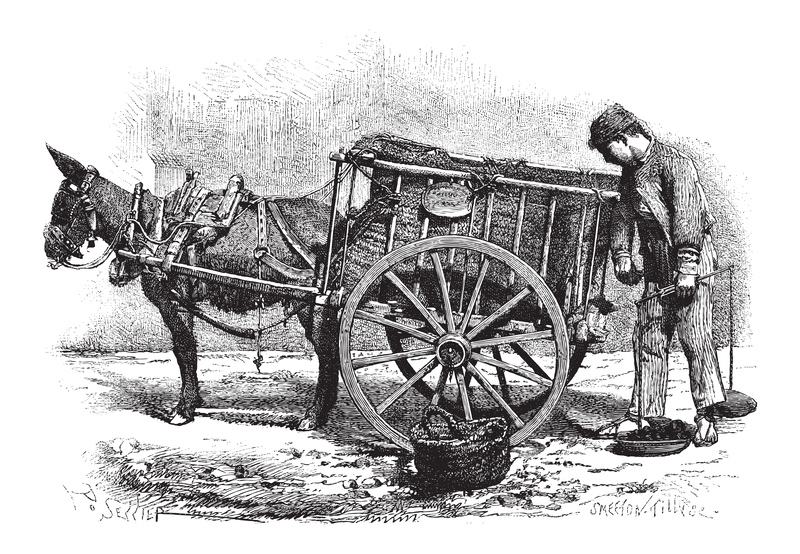Your Role in Minimizing PPE Waste Pollution
The COVID-19 pandemic has brought unprecedented awareness to the importance of personal protective equipment (PPE), such as masks, gloves, and face shields. However, this surge in PPE use has also resulted in a significant increase in PPE waste pollution. Every individual, business, and community plays a crucial role in mitigating environmental hazards caused by improper PPE disposal. In this comprehensive guide, we'll explore your role in reducing PPE waste pollution, offering practical steps, insights, and solutions to protect our planet.

Understanding PPE Waste Pollution: The Scope of the Challenge
PPE has become a mainstay of daily life. Unfortunately, billions of single-use masks, gloves, gowns, and face shields end up in our landfills, streets, and even oceans. Improperly discarded PPE is now a major environmental concern. Let's review what makes PPE waste pollution especially problematic:
- Non-biodegradability: Most PPE items are made of plastic-based materials like polypropylene, which can take up to 450 years to break down.
- Wildlife Threats: Discarded gloves and masks are often mistaken for food by animals, causing injury or death.
- Microplastic Generation: Over time, PPE degrades into tiny microplastics, contaminating water, soil, and even our food chain.
- Infectious Risks: Improper disposal of contaminated PPE can expose waste workers and the public to disease.
How Much PPE Waste Is Being Generated?
Recent studies estimate that 129 billion face masks and 65 billion gloves are used globally every month since the pandemic began. Large quantities of this waste end up in inappropriate disposal sites, landfills, or water bodies, amplifying PPE-related pollution and increasing environmental hazards.
Why Tackling PPE Waste Pollution Is Everyone's Responsibility
PPE waste pollution isn't just an industrial or governmental issue; it affects everyone and requires collective action. As individuals, we are both contributors to and potential solvers of this problem. Understanding and accepting your responsibility is the first step to reducing PPE pollution and its harmful effects.
Your Individual Responsibility Toward Cleaner Environments
- Personal Choices Matter: Each decision you make regarding PPE usage and disposal has a ripple effect on the environment.
- Raising Awareness: By updating your practices and informing others, you help spread solutions within your network and community.
- Protecting Future Generations: Responsible actions ensure a safer, cleaner world for those who come after us.
Practical Steps: Minimize PPE Waste Pollution in Daily Life
Even small actions make a significant impact when combined. Here are the essential things you can do to minimize personal protective equipment waste pollution at home, work, and in public settings:
1. Choose Reusable PPE Where Possible
- Reusable Masks: Instead of single-use masks, select cloth or washable masks when suitable. These can be sanitized regularly, reducing total waste.
- Washable Gowns and Face Shields: Health professionals and workplaces can invest in PPE designed for multiple uses.
Note: Always prioritize reusable PPE where the risk of infection allows. In high-risk environments, follow appropriate guidelines.
2. Proper Disposal of Single-Use PPE
- Avoid Littering: Never discard masks or gloves on streets, parks, or public spaces. Always use designated waste bins.
- Bag It Before Bin: Place used PPE in a bag before disposing of it in general waste bins to prevent contamination and wind dispersal.
- Do Not Recycle Contaminated PPE: Most curbside recycling services do not accept PPE, as it can contaminate recycling facilities and pose health risks.
3. Support and Advocate for PPE Waste Recycling Solutions
- Look for Specialized PPE Bins: Some organizations and municipalities have launched dedicated PPE recycling or disposal programs. Use them where available.
- Encourage Local Programs: Petition local authorities or businesses to implement PPE-specific waste collection and recycling initiatives.
- Participate in Community Clean-Ups: Organize or join neighborhood clean-ups to remove PPE litter from natural environments.
4. Educate Yourself and Others About PPE Pollution
- Stay Informed: Learn about PPE materials, risks, and eco-friendly alternatives.
- Share Knowledge: Use social media, schools, and workplaces to educate peers about reducing PPE waste pollution.
- Correct PPE Myths: Many believe that masks and gloves are recyclable in normal ways. Spread accurate information to prevent unintended contamination.
PPE Waste Pollution in Workplaces: Best Practices
Workplaces, especially in healthcare, hospitality, and retail sectors, are major PPE users. Here's how organizations can play a pivotal role in minimizing environmental impact:
Implement Responsible Procurement
- Source Sustainable PPE: Purchase PPE made with recyclable or biodegradable materials when available.
- Evaluate Suppliers: Choose vendors who follow sustainable manufacturing practices.
- Encourage Bulk Purchasing: Reducing packaging by buying in bulk cuts down on additional waste.
Safe Collection and Segregation of PPE Waste
- Install labeled PPE bins at strategic points (entrances/exits).
- Regularly train employees on the importance and methods of correct PPE disposal.
- Partner with certified waste disposal services for safe and ethical PPE waste management.
Incorporate PPE Awareness Into Workplace Culture
- Host eco-awareness sessions and webinars for staff.
- Display posters and infographics regarding PPE waste pollution and proper disposal.
- Reward innovative ideas from staff that help reduce PPE waste.
Innovations and Alternatives: Moving Towards Sustainable PPE
Recent advances have introduced eco-friendly alternatives to traditional PPE. Consider these when looking for green solutions:
- Biodegradable Masks and Gloves: Made from natural fibers or plant-based plastics, these break down in months rather than centuries.
- Recyclable Face Shields: Some companies offer face shields made from entirely recyclable plastics.
- Closed-Loop Recycling Programs: Innovative firms collect used PPE, sterilize, and transform them into other products like park benches or flooring.
Supporting sustainable PPE innovation not only reduces pollution but also encourages market-wide adoption of green solutions.
Community Actions: Multiply Your Impact
No one can fight PPE waste pollution alone. Here's how collective effort amplifies individual actions:
- Participate in or organize clean-up drives to collect PPE litter in your area.
- Initiate community education campaigns using flyers, social media, and local news outlets.
- Work with local authorities to improve PPE waste handling infrastructure, such as installing dedicated bins in parks and transit stations.
Global Strategies to Minimize PPE Waste Pollution
Countries worldwide are tackling PPE pollution with innovative policies:
- Extended Producer Responsibility (EPR): Laws that make PPE manufacturers responsible for post-consumer waste.
- Mass PPE Recycling Initiatives: Some governments have introduced mass collection and sterilization programs for large-scale PPE recycling.
- Educational Campaigns: Public messages in mass media encourage the proper disposal and use of reusable PPE.
How You Can Support These Initiatives
- Advocate for regulations supporting EPR and sustainable PPE procurement.
- Volunteer with organizations that manage PPE waste responsibly.
- Stay updated on local and global PPE waste management best practices and integrate them into your routine.
Myths and Facts About PPE Waste Pollution
Let's clarify some common misconceptions:
- Myth: Masks and gloves can be recycled with household plastics.
Fact: Most curbside programs do not accept PPE due to contamination risks. - Myth: Only hospitals contribute significantly to PPE waste.
Fact: Everyday use by individuals has greatly increased the scale of PPE pollution. - Myth: There's nothing I can do about global pollution.
Fact: Every choice--from selecting reusable PPE to disposing of it properly--directly reduces environmental impact.

Frequently Asked Questions (FAQ) on PPE Waste and Pollution
Can you wash and reuse disposable masks?
No. Disposable masks are designed for single use and may lose their effectiveness or harbor pathogens if washed. Choose certified reusable masks for sustainability and safety where possible.
Is burning PPE waste a solution?
Incinerating PPE can release toxic fumes and microplastics unless done with specialized equipment. It's not an eco-friendly solution for homes or businesses.
How can I dispose of PPE if there are no special bins available?
Bag used PPE securely and place it in regular trash bins. Do not place PPE in recycling or compost bins unless clearly indicated.
Your Lasting Impact: Be Part of the Solution
Your role in minimizing PPE waste pollution is both vital and manageable. By making simple shifts--opting for reusable PPE, educating others, disposing of single-use items responsibly, and supporting systemic change--you create positive environmental and social impact.
When you lead by example, you inspire others to act. Together, we can minimize the PPE pollution crisis, protect wildlife, preserve natural resources, and build a healthier planet.
Quick Checklist: Steps to Minimize PPE Waste Pollution Today
- Choose reusable PPE options when safe and possible.
- Always dispose of PPE in proper bins - never litter.
- Advocate for local PPE recycling initiatives.
- Educate others on preventing PPE pollution.
- Support and buy sustainable PPE products.
Remember: Preventing PPE-related pollution begins with your choices. Your actions can ignite a movement toward sustainability and a cleaner, greener world.
If you found this article helpful, please share it with others and join the movement to reduce PPE pollution today.
